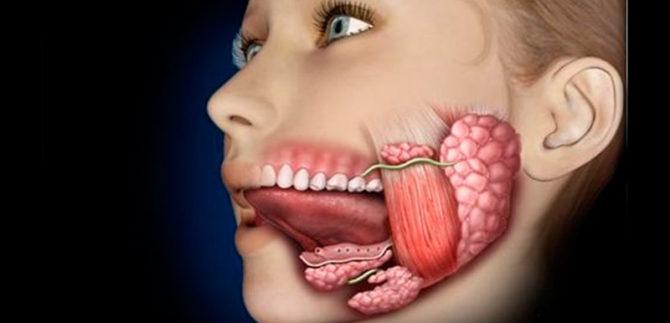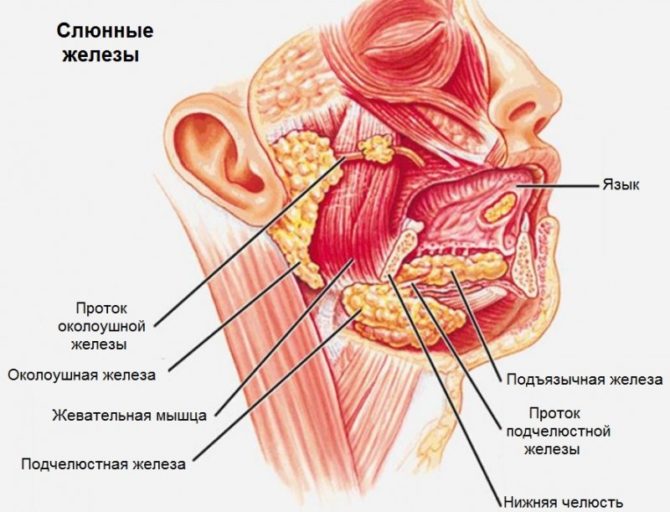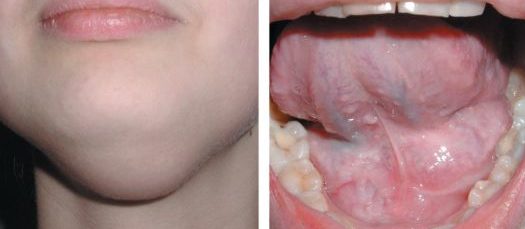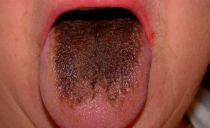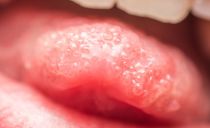The salivary gland under the tongue has become inflamed: signs, photos, causes and treatment
Pain under the tongue usually indicates inflammation of the gland - sialadenitis. The reasons why this disease can occur are many - from complications of acute respiratory viral infections to a foreign object in the salivary ducts. This symptom cannot be underestimated, since inflammation of the hyoid gland can lead to unpleasant consequences.
Content
What is under the tongue in humans
The primary processing of food is facilitated by saliva, produced by numerous small glands scattered along the wall of the oral cavity, and three pairs of large glands. In the lower part of the oral cavity are ducts of the submandibular and sublingual salivary glands.
While the salivary glands are fully functioning, many people do not even notice them. Knowing only the general structure of the oral cavity, few can tell where these organs are. But if the salivary gland under the tongue becomes inflamed, a person feels a swelling in the place where it is located.
Causes of salivary gland inflammation under the tongue
In most cases, the feeling that something is swollen under the tongue occurs with inflammation of the sublingual salivary glands. - sialadenitis. The most likely causes of the development of pathology are:
- Dental diseases and diseases of the ENT organs - stomatitis, caries, tonsillitis and any other diseases accompanied by the development of the focus of infection.
- Complications after pneumonia and other infectious viral, bacterial diseases in which pathogenic microorganisms enter the glandular tissue from the blood, lymph, or through their own ducts.
- The presence of a foreign body in the ducts - sometimes small particles of food, grains or bristles of a brush get into it when brushing your teeth.
- Inflammation after surgery.
- Accumulation of stones inside the salivary ducts.
- Inflammation of the tonsils and lymph nodes.
Less often, the glands become inflamed due to the development of cancer, dermatological diseases, allergic reactions. Such an inflammatory process may accompany anemia. With heavy metal poisoning, sialadenitis can occur due to the accumulation of toxic substances in glandular tissues.
Symptoms of inflammation of the salivary gland under the tongue, photo
A person begins to guess about the inflammation of the hyoid gland after he feels swelling and swelling under the tongue. It is painful, causes discomfort when swallowing, chewing food, and can interfere with talking.
When pressing on the bottom of the tongue from the ducts of the swollen glands, a clear liquid is released, if the inflammatory process is accompanied by suppuration, pus follows. Due to the admixture of pus in the saliva, a person can feel an unpleasant aftertaste and bad breath. The mucous membrane over the inflamed gland begins to swell, redden and thicken. Violent inflammation causes a jump in body temperature.
If the salivary duct is blocked with stones or clogged with a foreign body, a person may feel dry mouth due to lack of saliva.
There are two forms of sialadenitis:
- Sharp. First, it is accompanied by serous inflammation, which can turn into purulent. In advanced cases, necrosis of glandular tissues is possible.
- Chronic Sialadenitis can accompany the course of tuberculosis, syphilis, actinomycosis.Sometimes inflammation affects the parenchyma of the gland, its stroma or ducts.
Diagnosis of sialadenitis
The list of diseases in which swelling may appear under the tongue is very long, therefore it is almost impossible to identify the cause of the development of the pathology on its own. If something is swollen under the tongue, you need to urgently see a doctor, especially if saliva is not excreted, the gland increases, and the general condition worsens.
With this symptom, you can contact your dentist or therapist (pediatrician), but to clarify the diagnosis, you may need to consult many other doctors, including a rheumatologist, surgeon, TB doctor. For a full diagnosis, such examinations are necessary:
- Bacterial sowing.
- IFA.
- PCR assays.
- Ultrasound of the salivary glands.
- Cytological studies of the gland itself and its secretions.
- Sialography.
- Sialotomography.
How to treat salivary gland inflammation under the tongue
Depending on why the gland has become inflamed and a tumor has arisen, different treatment options are selected. In moderate conditions, novocaine blockade may be prescribed.
| Forms of sialadenitis | Treatment methods |
|---|---|
| Infectious sialadenitis | Antiviral or antibacterial therapy: irrigation of the hyoid area with antiviral agents, the introduction of antibiotics into the duct of the gland. Antipyretic drugs, drugs for the intensification of salivation, physiotherapeutic procedures. |
| Sialadenitis as a complication of another disease | In addition to symptomatic therapy, treatment of the underlying disease is carried out. |
| Purulent sialadenitis | In addition to drug treatment, an autopsy of the purulent focus can be performed. |
| Sialadenitis caused by a foreign body entering the duct | Surgical removal of a foreign body, anti-inflammatory drug therapy. |
If the inflammation under the tongue is not treated, it can lead to a complete loss of gland functionality and tissue necrosis. With a necrotic tumor, it is necessary to remove the entire salivary gland.
With frequent inflammation of the parotid, sublingual or submandibular gland, a chronic form of sialadenitis can develop, which is difficult to treat. Sometimes it is not at all possible to completely cure the pathology. Therefore, you need to go to the doctor immediately after the first symptoms of the disease appear, the course of treatment must be completed to the end.
Can salivary gland inflammation be treated at home
Trying to remove the swelling under the tongue at home, without examination and doctor's prescriptions, is dangerous. Self-selected methods of traditional medicine may harm or simply not have the desired effect, as a result of which the disease will continue to progress. In the presence of serious diseases of the internal organs and neoplasms, delayed treatment can lead to sad consequences. Therefore, at home, you need to perform only those procedures that are prescribed by the doctor.
During the treatment of sialadenitis, a special diet and brushing regimen must be observed. You can’t eat rough food and chew large pieces of food. You need to drink more liquid, especially milk and fresh juices. Regular, thorough, but careful brushing of teeth is very important - it helps to eliminate the pathogenic microflora that accumulate on the mucous membrane of the oral cavity.
If under the tongue something is swollen and sore, or pus has started from the salivary ducts, you need to go to a therapist or dentist. A thorough examination is necessary to determine the exact diagnosis, and then diligent treatment. It is necessary to try to cure the disease while it is in the acute phase, since the advanced chronic form of sialadenitis is not always amenable to complete cure.

